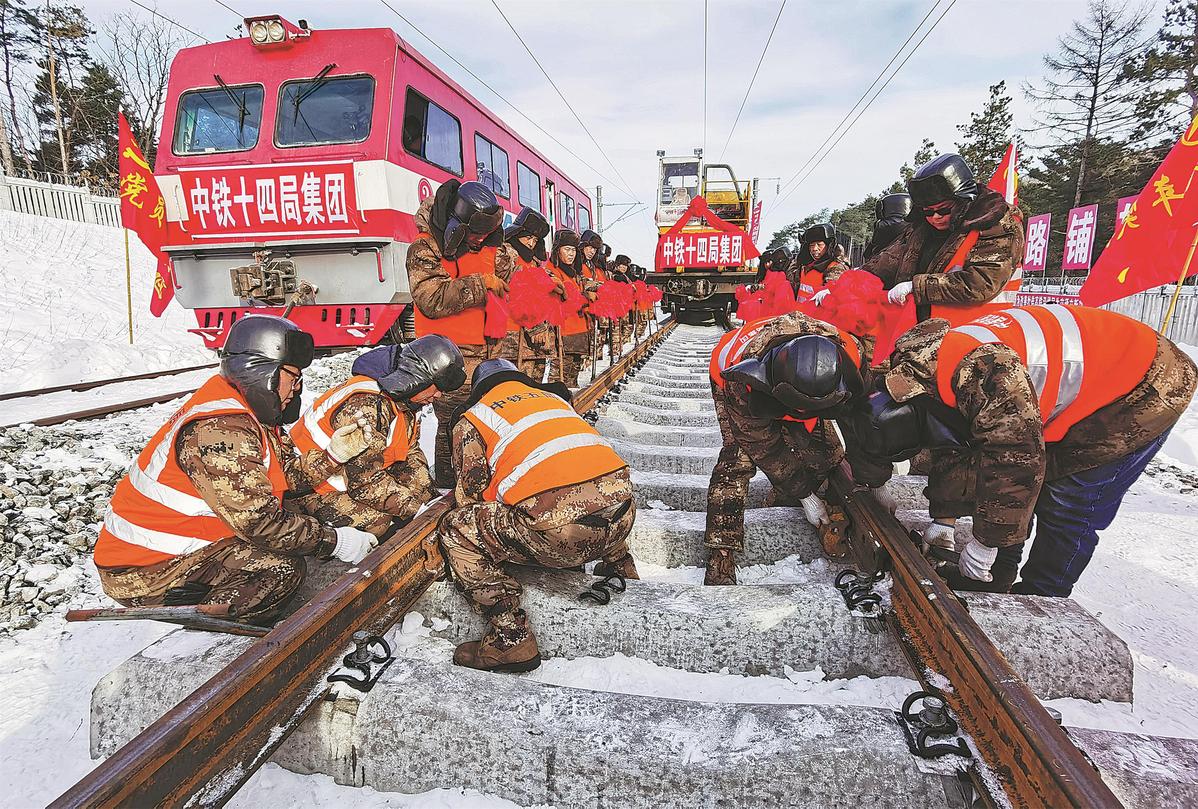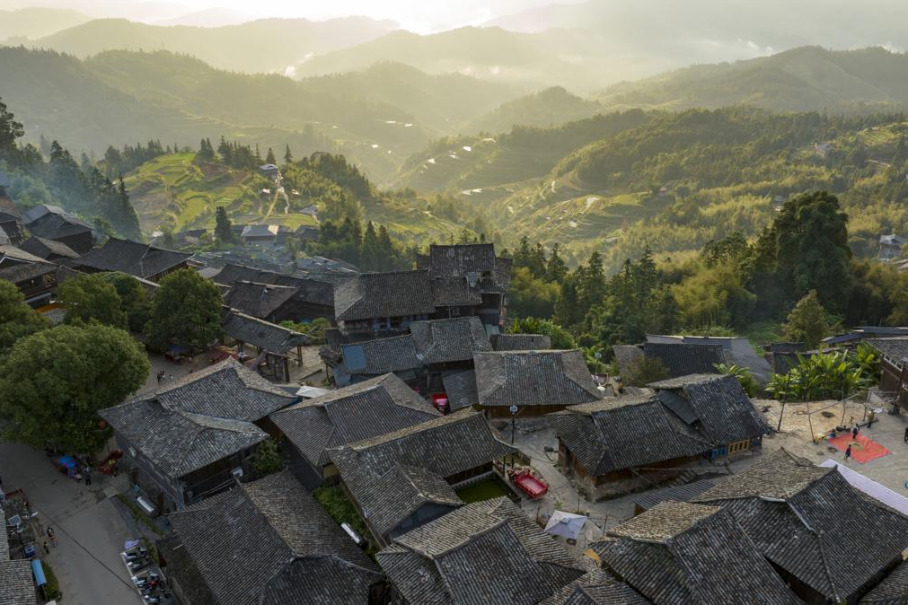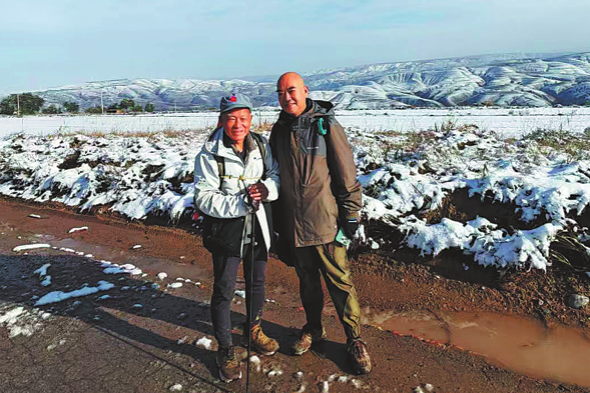Ready to roll, through the cold


Easternmost high-speed rail line will also offer 5G coverage, winterized facilities. Luo Wangshu reports.
Bullet train conductor Yan Meicheng has become a star among family and friends after being selected to serve on a new high-speed railway line connecting Mudanjiang and Jiamusi in Heilongjiang province.
Before the new line opened for business, Yan and her parents received many inquiries from family and friends, even strangers, about the opening of the line.
"Many of my schoolmates asked about the start date and said in the future they can easily visit me," said the 25-year-old Mudanjiang native.
Her parents' friends often asked her mother and father about the start date after learning that Yan was behind the wheel.
"They plan to take the line to travel," she said.
Even strangers who saw Yan wearing her train conductor uniform have asked her when the new route would be open to the general public.
The long-awaited high-speed railway was scheduled to begin operations in late September, but the date was postponed due to the emergence of COVID-19 cases in the province recently. It has attracted widespread attention.
The 372 kilometer line, with a designed speed of 250 km per hour, is China's easternmost high-speed railway. It is located in a region where temperatures can drop to as low as -40 C.
The line, linking two major cities in the province, reduces travel time between them from seven to two hours. It has seven regular stops along the line.
The new route forms a high-speed railway circle linking Harbin, the provincial capital, with Mudanjiang and Jiamusi.
The new line has greatly improved connectivity within the traditional industrial hub with other parts of the country and boosts socioeconomic development in Northeastern China.
Construction of the railway started in November 2016. Track-laying work was completed in November last year. Since June, different types of bullet trains have been put into operation for test runs with full-line trial runs beginning in August.
Aiming for a model project
China has accumulated abundant experience in designing and building high-speed railways in extremely cold areas. In Heilongjiang, several high-speed lines such as the one connecting Harbin and Dalian, Liaoning province, as well as the line linking Harbin and Mudanjiang and Jiamusi have been put into operation. The new line learned from previous experiences by other lines and has developed new technologies to combat Old Man Winter, aiming to build a model project of high-speed railways in extremely cold regions, said Niu Yongping, chief engineer of the project from China Railway Design.
It represents China's top technology and management expertise in building high-speed railways in extremely cold areas, Niu said.
The province now has five high-speed railway lines-four lines link Harbin with Beijing, Qiqihar, Jiamusi and Mudanjiang, plus the new line.
Niu said that the line has been built using high-quality construction and design standards. The goal was to build a green and smart model railway project.
Engineers adopted new materials and designed intricate structures to combat the cold, including rail beds, bridges, tunnels, tracks and houses along the line.
Dealing with frozen soil is essential to designing adequate rail beds, as ultralow temperatures can cause track distortions. Freeze-resistant materials and new structures have been adopted to prevent rail beds from changing shape, Niu added.
After monitoring operations for two winters, rail bed distortions were no more than 6 millimeters, below the standard deviation of 8 mm.
Nearly 60 percent of the line involves tunnels and bridges. Engineers selected freeze-resistant materials to build bridge supports. The materials can withstand temperature shifts from between-44 C to 60 C.
Engineers dug ditches as deep as 2,000 meters under tunnels to prevent standing water from freezing. At tunnel entrances, the ditches are some 1,000 meters underground.
The line has 34 tunnels and 173 bridges and passes old mines. Designers conquered challenges of complicated geographic conditions and accumulated experience to build a complex high-speed railway in extremely cold regions, he added.
- Beijing accelerates renovation of old residential buildings
- Guangzhou optimizes rail services for 15th National Games, Paralympics
- New sci-tech innovation platforms launched in Xinjiang
- Thai students document Wuhan life in photo contest
- Basha Miao village glows in early winter's embrace
- Fengxian achieves leapfrog economic growth through new drivers




































